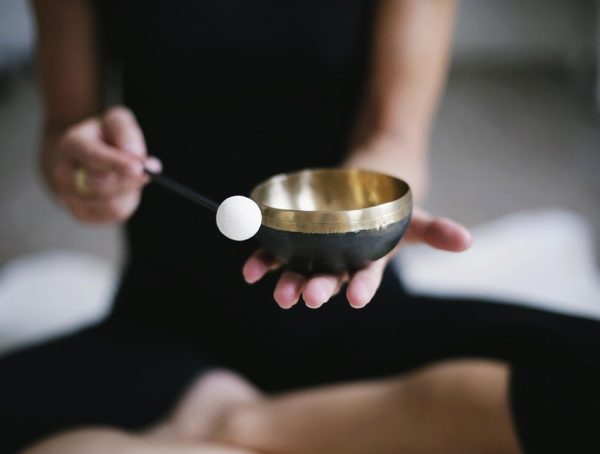The Role of Mantras in Transcendental Meditation: A Deep Dive
Transcendental Meditation (TM) has garnered a significant following across the globe, revered for its simplicity and powerful benefits, including reduced stress, heightened creativity, and improved emotional health. Central to the practice of TM is the concept of mantras, unique and specific sounds or words that serve as the focal point for the meditator. This article will unravel the profound role of mantras in TM, exploring their historical context, psychological effects, and practical application. Additionally, we will provide actionable steps for those keen on integrating this transformative practice into their lives.
The Essence of Mantras
The word "mantra" originates from the ancient Sanskrit language, meaning "tool of the mind." Unlike traditional meditation practices focusing on emptying the mind or cultivating concentration, TM encourages the natural flow of thoughts through the use of a mantra. This sacred sound, which is typically chosen and assigned to the individual by a trained TM instructor, resonates on a personal level, aiming to transcend the ordinary thought patterns and embrace a deeper state of consciousness.
Historical Context
Mantras have been utilized for thousands of years in various spiritual traditions, including Hinduism, Buddhism, and Jainism. Historically, these sounds were considered to carry not only personal significance but also universal power. Chanting mantras is believed to affect vibration at a cosmic level, aligning the individual with the universe.
In TM, the mantra serves a dual purpose: it is both a vehicle for meditation and a facilitator in achieving a profound and restful experience. As one focuses on the mantra, they are led into quieter mental states that enable a transcendental experience—an elevation beyond the typical confines of personal experience.
The Psychological Benefits of Mantras
Research suggests that repetition of mantras can produce various psychological benefits, enhancing the meditation experience and extending its effects into everyday life. Here are a few foundational benefits supported by scientific inquiry:
-
Stress Reduction: The rhythmic and soothing quality of mantras can induce relaxation and deactivate the mind’s chatter. This is particularly valuable in managing the physiological responses to stress.
-
Enhanced Focus: Focusing on a mantra helps develop concentration. This ability to engage deeply with a single point of reference improves overall cognitive function, leading to improved problem-solving skills.
-
Emotional Regulation: Regularly practicing TM with a mantra can help individuals better handle emotional responses, fostering resilience against anxiety and depression.
- Increased Creativity: By relaxing the mind and promoting transcendence, mantra meditation opens avenues for creative thought, allowing individuals to approach problems with a fresh perspective.
Practical Application of Mantras in Transcendental Meditation
To experience the benefits of mantras in TM, it’s essential to understand how to implement them effectively in practice. Here are some actionable steps for you to embark on your TM journey:
Step 1: Seek Guidance from a Certified TM Teacher
While you can find many resources online, learning from a certified TM teacher is crucial. They provide personalized guidance, assign the appropriate mantra, and lead you through the foundational practices.
Step 2: Create a Dedicated Space for Meditation
Find a quiet space in your home where you feel comfortable and can regularly meditate without interruptions. Setting the mood by keeping the area clean, using soft lighting, or adding calming scents can enhance your experience.
Step 3: Set a Regular Schedule
Consistency is key for any practice. Aim to meditate twice a day for 20 minutes each session; mornings can set a positive tone for your day, while evening sessions help you unwind.
Step 4: Learn to Repeat Your Mantra Silently
Once assigned your mantra, practice the silent repetition—allowing thoughts to come and go without attachment. If your mind wanders, gently guide it back to your mantra.
Step 5: Let Go of Expectations
Approach each session without expectations. The beauty of TM lies in its simplicity—allow the mantra to work at its own pace, leading you deeper into stillness.
Step 6: Reflect on Your Experience
Post-meditation, take a few minutes to reflect on how you feel. Keep a meditation journal documenting your experiences, challenges, and any insights gained over time.
Conclusion
The use of mantras in Transcendental Meditation is not just a tool for focus; it serves as a profound bridge to deeper states of awareness and enhanced well-being. By embracing this practice, you can unlock a plethora of benefits including stress reduction, increased concentration, and emotional stability.
As with any new practice, patience is essential—transformation doesn’t happen overnight. However, establishing a regular meditation routine with your mantra can lead to lasting shifts in your mental and emotional landscape.
To quote Dr. John Kabat-Zinn, “You can’t stop the waves, but you can learn to surf.” Embrace the waves of life with the stability and focus that comes from regular meditation.
If you find this topic inspiring and wish to follow Kevin for more insights and updates, join the community on Instagram @KSteineman. Let’s embark on this journey of growth and transformation together!
You might also like
More from Meditation
The Science Behind Meditation: Improving Mental Health Naturally
The Science Behind Meditation: Improving Mental Health Naturally In today's fast-paced world, the pursuit of mental wellness has become paramount. Thousands …
Understanding the 7 Types of Meditation for Beginners
Understanding the 7 Types of Meditation for Beginners: A Path to Inner Peace Meditation has become a popular practice in recent …
The Ultimate Guide to the Three Types of Meditation
The Ultimate Guide to the Three Types of Meditation Meditation is more than just a tool for relaxation; it’s a thriving …

































